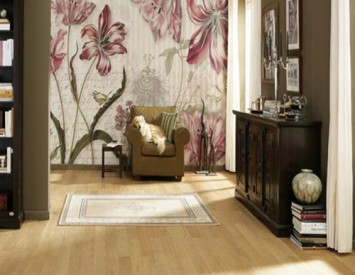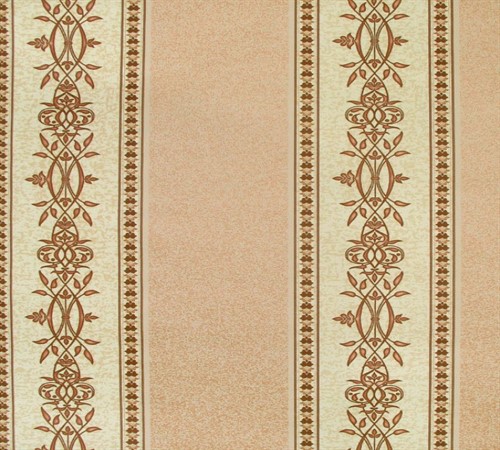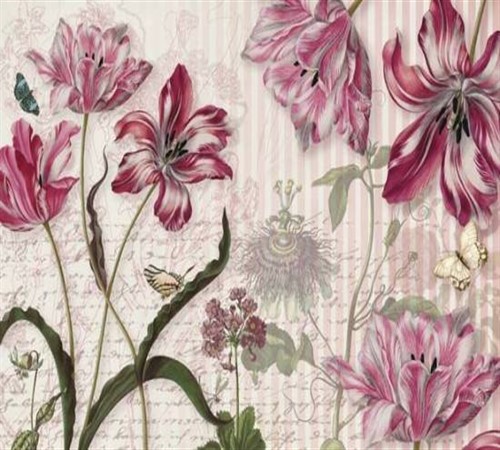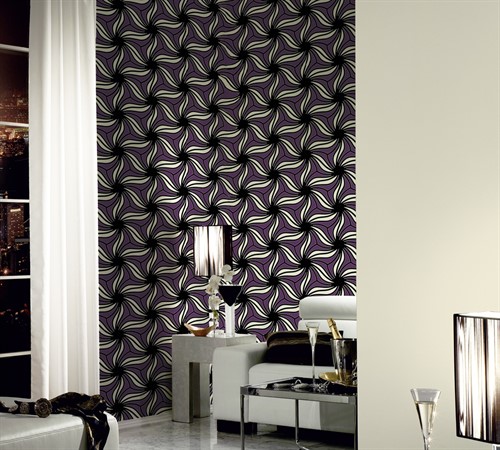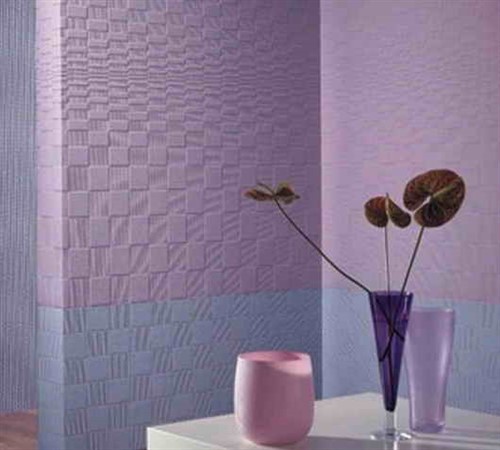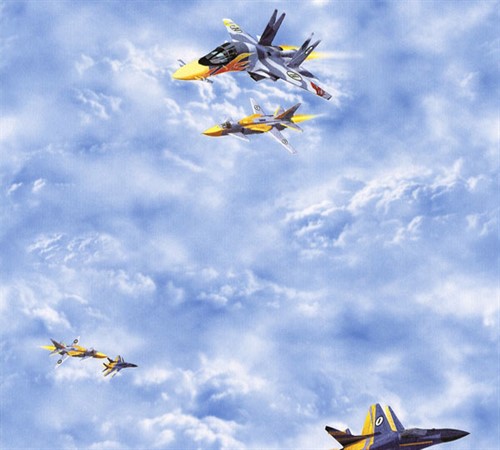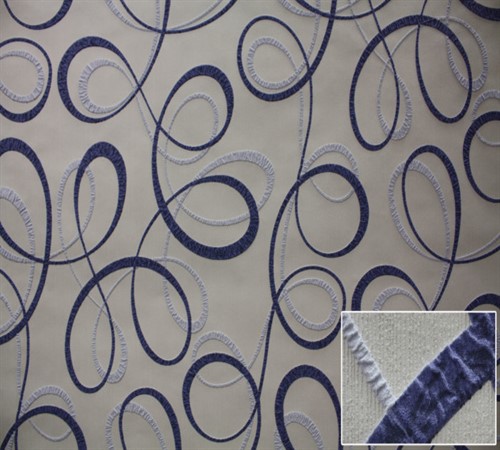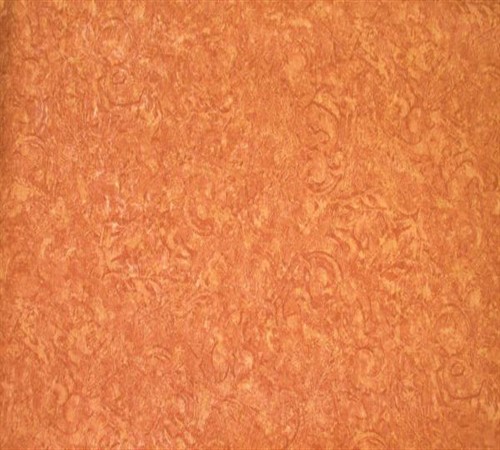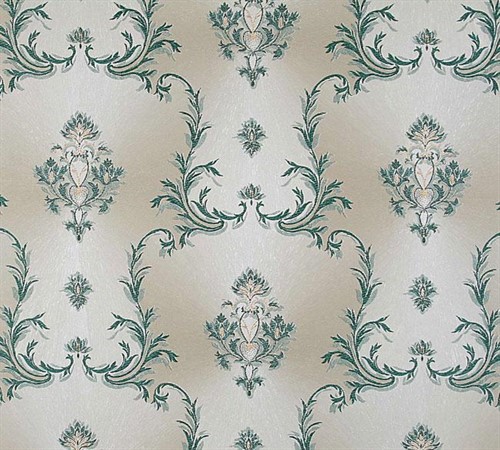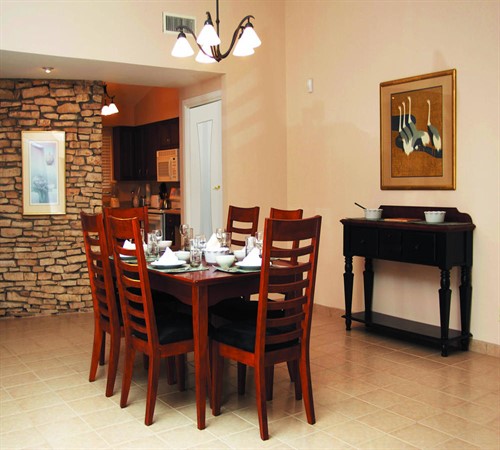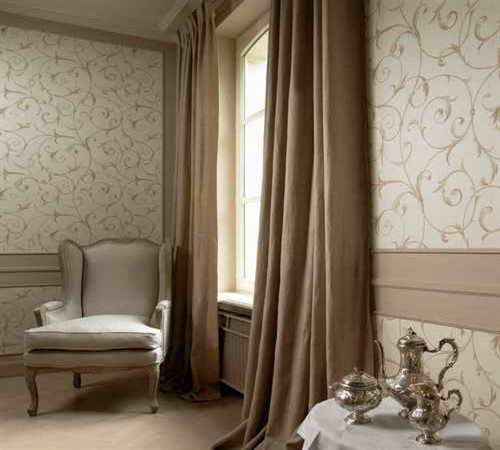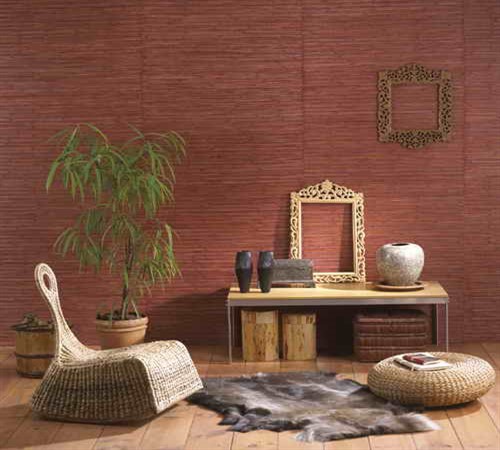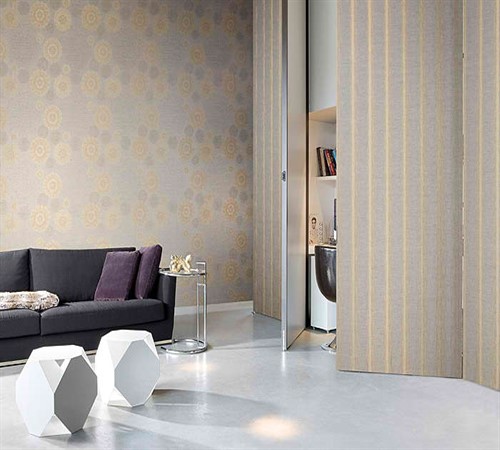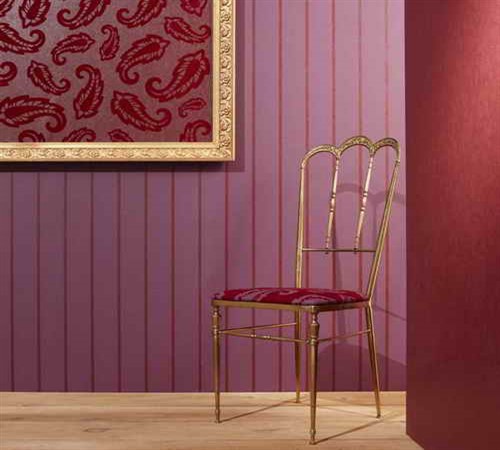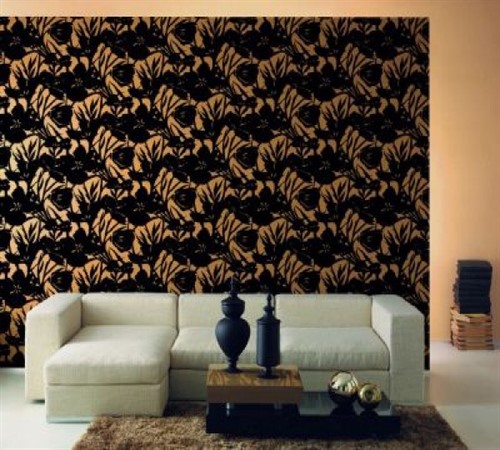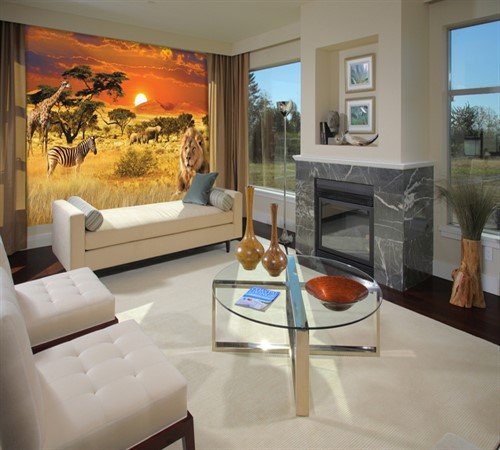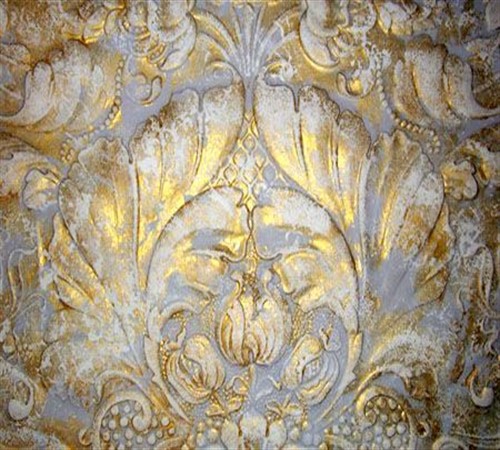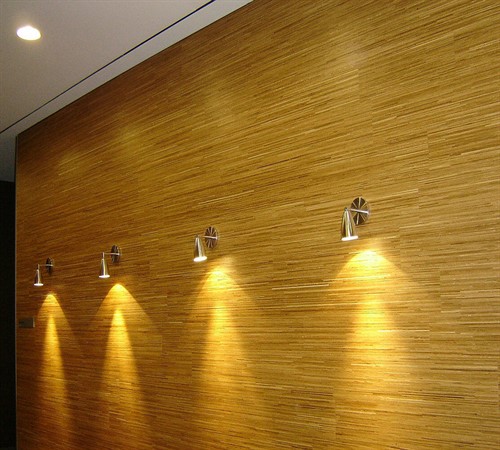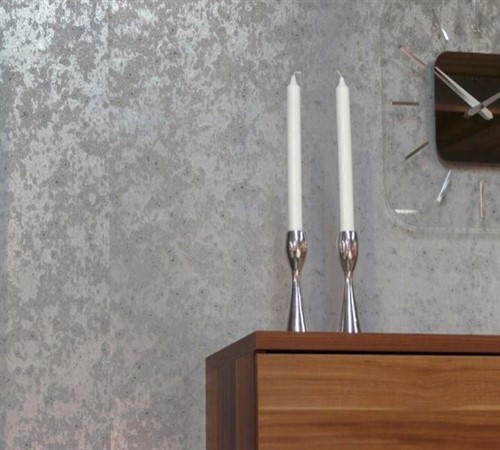The all kinds of spectral row, along with different combination of materials, in most cases not much distinguished by the appearance, significantly complicate the choice of a suitable option for finishing material. At the same time, information printed on wallpaper labels carries uninformative information, which causes the need to obtain the most exhaustive amount of information, especially before the acquisition of the selected option.
Content
Paper wallpaper
Among the huge splendor of various kinds of wallpaper, which have the optimal ratio of price and quality, paper still remain at a height. The environmental friendliness of the material, along with a low price, is a wide tint spectrum, which opens all kinds of decoration options for the room, and other characteristics make paper wallpaper indispensable finishing material in some situations, for example, for people suffering from polymers that are included in the facial layer of most wallpaper.
These and other reasons prompt manufacturers to improve the quality properties of this category of wallpaper, developing all new varieties. Currently, 2 main types of paper wallpaper are distinguished, including several subspecies.
Simeplex
Simeplex is a single -layer version of paper wallpaper, which plays, on the one hand, the role of a substrate, and on the other, the front side covered with a pattern in a typographic way. This type of wallpaper includes a two -layer symplex when the pattern is applied to a two -layer sheet. Symplex wallpapers are distinguished by a smooth surface and a very small thickness.
Advantages:
- wide color scheme;
- wonderful steam, moisture permeability;
- the cheapest paper wallpaper.
Flaws:
- the impossibility of wet cleaning;
- susceptibility to mechanical damage in the process of pasting, operation;
- quickly lose their original shade;
- a perfectly even base is necessary;
- small service life.
Significant disadvantages of symptoms are absent in duplex paper performance.
Duplex
Duplex - wallpaper consisting of two layers of paper, where one layer is a substrate, and the other is an external coating. The process of production of such wallpaper consists in creating a pattern on the facial sheet, which then glues with a substrate, significantly increasing the strength of the wallpaper sheet. Duplex wallpapers have both a smooth and embossed surface.
The advantages of duplex wallpaper relative to the symptomed:
- more racks to the sun's rays, due to the application of special compositions, slowing down the loss of color;
- mask inconspicuous bumps;
- more durable.
Flaws:
- under the influence of the adhesive composition, a violation of relief is possible;
- lack of resistance to damage;
- low wear resistance;
- higher price.
A variety of duplex wallpaper is paper wallpaper designed for painting. They are distinguished by the white color of the canvas and a rather pronounced texture, however, after multiple staining, the surface relief is slightly disturbed.
3 types of wallpaper for painting are distinguished:
- Structural wallpaper - are produced by embossing using binder polymers, as a result of which a combination of a smooth and embossed surface occurs.
- Roughly-fibrous wallpaper-are characterized by the placement of various sizes of wood chips in the space between the sheets, due to which the original texture is obtained, pressed through a complex technological process. This option of wallpaper reliably masks the small irregularities of the base.
- Moisture-resistant wallpaper-subject to processing water-, with dirt-repellent agents that allow to wash the wallpaper during operation and use to glue surfaces in conditions of high humidity.
Thus, paper wallpapers, the price of which depends on the number of layers, the method of production and the quality of the materials used varies in a fairly wide range and, in most cases, corresponds to the quality and purpose of a certain type of wallpaper.
Paper
The wallpaper with a paper substrate includes various types, among which the most common murals, wood veneer wallpapers, lininkruste, paper, vinyl, textile, metal, etc. At the same time, to the category of paper wallpaper, non -woven ones have a rather vague attitude. The fact is that non -woven is a fabric that is 70% similar to paper according to the component components. In relation to other properties, non -woven wallpaper is quite different from paper.
Vinyl wallpapers
A huge variety of vinyl wallpaper is due to a combination of quality and acceptable cost. Vinyl wallpaper is characterized by the presence of a paper or non -woven base on which polyvinyl chloride is subsequently applied, which provides not only aesthetic attractiveness to the finished finishing material, but also prevents it from damage. In this case, the drawing on the wallpaper appears by foaming polyvinyl chloride or using the method of hot or chemical tightening.
Based on the method of applying the drawing, the front side of the wallpaper acquires various relief and thickness, as a result of which vinyl wallpaper is divided:
1. Wallpaper on a foamed basis - are distinguished by a clearly marked texture achieved by the method of stencil printing, followed by foaming vinyl at high temperatures previously applied to the base.
Pros of vinyl wallpaper:
- hide minor irregularities of the glued surface;
- the possibility of wet cleaning;
- low cost.
Minuses:
- relative resistance to damage;
- lose their original shade under ultraviolet rays;
- there is a high probability of abrasion in places of contact with interior items.
2. The wallpaper produced by the method of chemical embossing includes inhibited vinyl, which is released by the glossy surface that contributes to the unhindered removal of complex pollution. In the process of production of inhibited wallpaper, special substances applied to the drawing are used. Under the influence of high temperatures, the vinyl areas, not sprinkled with substances, are subject to uniform foaming, creating a harmonious combination of foamed material with elements of silkography.
Pros:
- original design;
- high resistance to multiple cleaning;
- non -exposure to ultraviolet rays;
- significant mechanical resistance;
- long life (10-15 years).
Minuses:
- small surface defects are poorly hidden;
- high price.
3. The wallpaper of hot embossing, in relation to foamed polyvinyl chloride, differ in improved resistance to various mechanical damage, do not fade, they can be washed. Vinyl wallpapers, in the production of which hot embossing is used, differ in quality characteristics, thickness and other properties.
There are 3 types of wallpaper made by hot embossing:
1. Silkography or flat vinyl is characterized by the relative subtlety of the canvas, as well as a brilliant and rather smooth surface. Thanks to the embossing method, a completely reliable imitation of interspersed in the canvas of silk threads is created.
Pros:
- a unique design achieved by the play of light of brilliant elements;
- high strength of the material, despite the thickness of the finishing material;
- any pollution is easily removed from the canvases;
- the ability to use the brush of medium stiffness during wet cleaning.
Minuses:
- does not even hide the slightest bumps of walls, so a thorough preparation of the base is required;
- high price.
2. The compact vinyl is characterized by a high density of the material that simulates brick, masonry, textiles, skin, volumetric embroidery. The surface of the wallpaper has a fairly noticeable relief.
Pros:
- mask small irregularities;
- excellent resistance to detergents and mechanical damage;
- do not lose their original color for many years;
- the ease of pasting.
Minuses:
- the need to apply antifungal primer to the walls;
- the possibility of shrinkage in the process of drying of glue;
- high price.
3. A heavy vinyl is characterized by a three -layer paper base that prevents the penetration of moisture deep into the structure. The surface of the wallpaper is represented by significant relief, although the pattern is applied by hot embossing. The environmental friendliness of the material is ensured by the removal of unsafe compounds in the process of evaporation of vinyl at high temperatures.
Pros:
- do not fade;
- have high strength;
- the possibility of cleaning using the detergent and the average stiffness of the brush;
- maskery the defectiveness of the walls.
Minuses:
- complexity when gluing;
- in view of the large weight, preliminary application of the primer is required before gluing, for better adhesion of materials;
- high cost relative to other varieties of vinyl wallpaper.
A huge selection of color scheme, along with certain conditions for using one or another type of vinyl wallpaper, allows you to choose the most suitable type of relative place for their use.
Textile wallpaper
The structure of textile wallpaper includes a paper or non -woven substrate and a finishing layer represented by artificial or natural threads, fibers. Despite the environmental purity of materials used in the production and aesthetic attractiveness, the choice of textile wallpaper should be made taking into account a number of features contained in the advantages and disadvantages of the material.
Advantages:
- have sound, thermal insulation qualities;
- excellent wear resistance;
- not exposed to ultraviolet radiation;
- mechanical resistance directly depends on the material used for the finishing layer.
Flaws:
- the possibility of abrasion in places of frequent contact, for example, near sockets, switches;
- the complexity of gluing;
- high ability to accumulate dust;
- the possibility of using only dry cleaning;
- high price.
Currently, textile wallpaper is divided into the following varieties based on the material used in creating wallpaper:
- Silk wallpapers, due to the significant high cost of real silk, are produced mainly from viscose in combination with natural threads. At the same time, silk wallpapers steadfastly tolerate dry cleaning, mechanical exposure, but fade over time.
- Jute wallpaper is distinguished by a relief texture that contributes to the masking of irregularities of the glued surface. In addition, jute wallpaper does not fade, well tolerate cleaning with a damp cloth.
- Linen wallpapers are characterized by durability, resistance to fading and antiseptic effects.
- Velor wallpapers are made by applying a pile to a paper base, so they are poorly tolerate not only wet, but also dry cleaning. In addition, velor wallpaper has a high ability to accumulate dust, as a result of which they quickly become unusable.
- Fetir wallpaper is made from both natural fabrics and its analogues. Such wallpapers differ in special strength, resistance to wet cleaning using non -aggressive detergents, and the complexity of gluing.
Of course, the high cost of the wallpaper, despite a lot of positive properties, contributes to the inaccessibility of textile wallpaper by most of the middle class of the population.
Wallpaper
As the main material for the photo wallpaper is a single -layer or two -layer paper with the subsequent application of the photo image. At the same time, paper murals are subject to mechanical damage, various kinds of pollution, a change in the shade under the influence of sunlight. To improve operational characteristics, an additional layer of acrylic, varnish and other similar compounds is applied on top of the photo image.
Pros:
- open huge prospects for interior decoration;
- low cost.
Minuses:
- even the slightest bumps do not hide;
- the complexity of gluing.
The cost and wide design capabilities open the right path to changing a boring interior by adding bright colors, emotions applied to the murals.
Linkrust
Lincrust is a combination of chic sophistication with remarkable decorative characteristics. Wallpaper is made by applying on a paper basis of various compositions of elastic mastics, allowing to obtain an ornament of any complexity. Lincrust - meets with a smooth and embossed surface, which allows you to create unique masterpieces from one type of wallpaper.
Pros:
- the possibility of repeated repainting;
- duration of use;
- the ease and ease of care.
Minuses:
- the presence of a flat surface;
- the complexity of gluing;
- high price.
Linkrust, despite the high cost, has a long period of use with minimal and unpretentious care, which significantly increases the demand for this finishing material.
Wood veneer wallpaper
A fairly new material consisting of environmentally friendly components. Wallpapers from wood veneer are produced by a veneer of valuable wood species on a paper base, excluding the manifestation of allergies to this finishing material.
Advantages:
- good noise, thermal insulation qualities;
- slight change in the original color over time;
- contribute to the creation of a good microclimate in the room;
- resistance to mechanical damage;
- the ability to cover with an additional layer of varnish, wax for extension of the operational period.
Flaws:
- the complexity of the surface pasting work;
- high price.
Thus, wallpapers from wood veneer have the best operational qualities than duplex paper, and they look much more spectacular.
Metal wallpaper
Compared to other types of wallpaper, metal wallpapers are less known as finishing material, although the originality of the decoration of the room with such wallpaper affects sophistication and originality, since metal wallpapers with gold, bronze, silver coating are made. Wallpaper is carried out on a paper base of thin foil, subsequently subjected to embossing or applying a decorative pattern.
Advantages:
- good thermal insulation qualities;
- do not fade;
- do not miss radio waves;
- belong to washing wallpaper;
- the ease of gluing.
Flaws:
- ease of damage by sharp objects;
- the presence of an even base;
- expensive finishing material.
Metal wallpapers, being moisture -resistant material, are suitable for use in rooms even with high humidity, but it is worth considering the high probability of their mechanical damage.
Thus, a huge assortment of all kinds of wallpaper, including at least their varieties, allows you to choose the necessary option based on operating conditions and financial capabilities. At the same time, paper wallpapers can be bought in any specialized store, without worrying about the inconsistency of the price and quality declared by the manufacturer.
